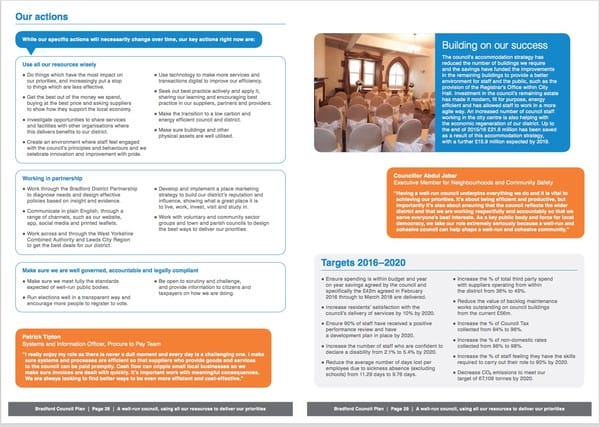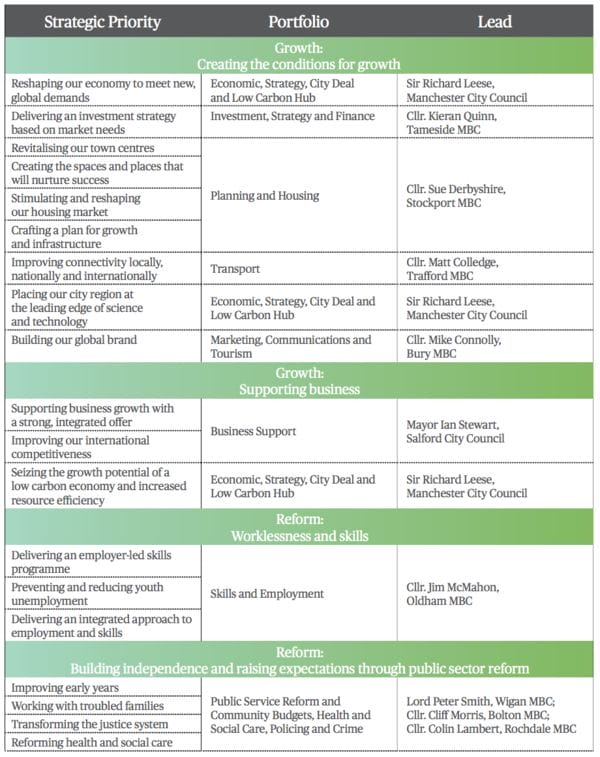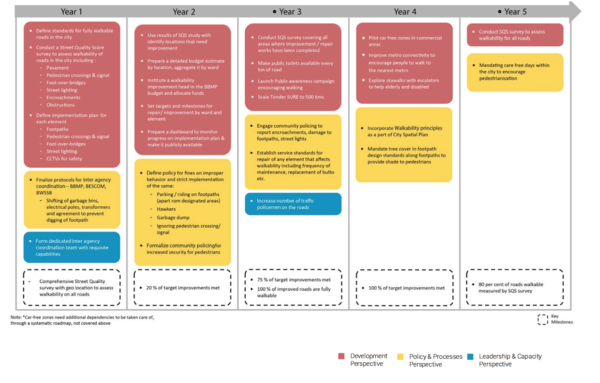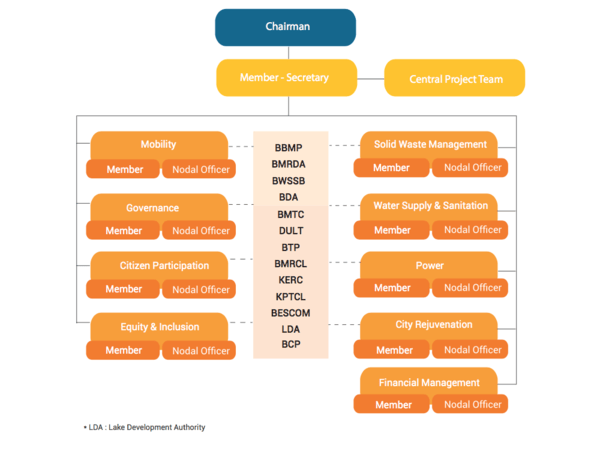On March 16th, Janaagraha conducted the workshop “Bengaluru Blueprint: Practical Learnings from Greater Manchester and Bradford, United Kingdom”, with two guests from England: Mark Atherton – Director of Environment for Greater Manchester at the AGMA (Association of Greater Manchester Authorities) – and David Cawthray – Assistant Director of Information Services at Bradford Metropolitan District Council. Citizen Matters reviews the key takeaways from the two guests’ respective city’s master plan, and introduces Janaagraha’s Blueprint for Bengaluru.
The focus of Janaagraha’s workshop was on the how we realise our goals instead of what our goals are – a distinction rather relevant in the context of the publication of the BDA’s master plan 2031 earlier this year. Critics pointed out that the previous master plan wasn’t implemented correctly, thereby doubting on the significance of any new attempts at encapsulating the future of Bengaluru within a document.
Nevertheless, the master plan holds statutory power and will directly or indirectly impact the city’s future. In that matter, Bengalureans should be fully aware of what it comprises and entails, a task that requires more effort than it should. Indeed, Bengaluru’s master plan 2031 remains rather vague on how it expects to bring about change. The BDA’s document isn’t a pleasant read. In addition, it fails to provide readers with the right tools and metrics to be able to closely monitor the municipality’s actions towards the realisation of the city’s goals.
During the presentation the audience were handed the master plans for both Bradford and Manchester City. Have a look at them and see for yourself how they differ from Bengaluru’s.
But why should we give any attention at practices from a country like England anyways – a country whose cities are so hardly comparable with Indian cities? Well, as Mark Artherton said at the beginning of his presentation:
”What struck me during the preparation of this presentation is that there are quite a lot of similarities between the UK and Indian cities. It’s just a matter of scale. Manchester and Bradford share the same problems that the ones you have here. Around transport around congestion, around waste management, water quality problems…”
The Bradford Council Plan for 2016-2020
The plan covers job creation, education, affordable housing, services availability – and, most importantly, in a context of shrinking funding from government, the plan gives detailed guidelines on how the municipality intends to decrease costs while still being able to provide its services. Each of the above mentioned categories are addressed separately in the plan in a comprehensive manner under the following headings: “Our Job” – an introduction of the problem at hand coupled with the vision of the municipality on how they can be overcome and the priorities set accordingly -; “Our Actions” – a set of practical and deliverable actions related to each of the priorities previously set-; and “Targets 2016-2020” – quantified targets with specified delivery dates.
For instance, the governance and cost reduction part called “A well-run council, using all our resources to deliver priorities” projects under “Our Job” to: 1) make for a wiser use of resources including money, staff, technology, information, facilities assets and buildings, as well as, whenever possible, to attract external funding and investment; 2) work in partnership to constantly learn from best practice and make the most out of the district’s resources; 3) encourage the scrutiny of the municipality’s policy setting and delivery.
Under “Our Actions”, and relating to the wiser use of resources, the plan exposes nine concrete actions, among which are: a transition to a low carbon and energy efficient council and district; and to require from suppliers to show how they support the local economy. Under “Targets 2016-2020”, and corresponding to the actions above, there are plans to decrease CO2 emissions to meet our target of 67,109 tonnes by 2020; and increase the % of total third party spend with suppliers operating from within the district from 36% to 45%.

The Bradford Council Plan offers two take-aways for Bengaluru. First, it took a reader-friendly approach. This was done by displaying information in a visually intuitive manner using helpful colour schemes and boxes; by being quite concise and parsimonious with its content, thus each topic is addressed within two pages and the document totals 30 pages; and by respecting a common structure for the whole document: “Our Job”/“Our Actions”/“Targets 2016-2020”.
Secondly, it provides quantified and temporal targets associated with its objectives. Such will make it easier for the citizens to make their municipality accountable and will results in increased transparency. However, some objectives don’t have dedicated target; a more consistent linking of objectives and targets would be preferable.
The Greater Manchester Strategy 2013
The chapter “Making it happen” of Manchester’s plan provides us with an alternative setup regarding how we make sure goals will be achieved – in that it differs substantially from Bradford’s. Thus, implementation does not set out everything that Great Manchester will do in the coming years, but instead articulates a vision and identifies key-long term goals and sets out strategic priorities to deliver these.
The concept of “portfolio leads”, as the “owners” of the development and delivery of implementation plans is an important take-away for Bengaluru. The role of the portfolio leads will be to assure the development of the strategic priorities. Thus, portfolios will comprise 1 to 4 strategic priorities. Each of these will be assigned to a public servant. The actions and interventions to deliver objectives will be revised throughout implementation, informing the commissioning and decommissioning of the “portfolio leads”; the set of actions and interventions will be set in the Growth and Reform Plan, thereby assuring a certain level of accountability. One issue pertaining to this model is that priorities can be cross-cutting; however, given actions and interventions are well-defined, accountability can be maintained.

Janaagraha’s Bengaluru Blueprint 2017 (vol. 1 & vol. 2)
Janaagraha’s Blueprint – championed by N R Narayana Murthy, founder of IT-giant Infosys and coordinated by Janaagraha and Jana Urban Space Foundation, and supported by Bain & Company – aims to provide an actionable 5-year framework for Bengaluru. It starts from a shared vision stemming from workshops and interviews organised with political leaders, academics, domain experts, citizen groups, corporates etc. Following this, a set of quantitative goals were attributed to 9 sectors (Mobility, Water Supply and Sanitation, Solid Waste Management, Equity and Inclusion, Power, Governance, Citizen Participation, Financial Management, and City Rejuvenation).

Then, a road map model with qualitative goals and quantitative targets for each of the five years is presented; this roadmap is applicable on a goal basis and should lead to increased accountability.

Similarly to Manchester’s “portfolio leads” the Blueprint proposes an institutional structure where the Bangaluru Blueprint Action Group (BBPAG) – comprising all agencies providing civic services in Bengaluru – is composed of a Central project team responsible for the co-ordination and monitoring of the sectoral sub-groups. The BBPAG would be overseen by a Committee of Ministers chaired by the Chief Minister of Karnataka.

The right master plan for the right governance
Good governance means the ability of politicians to work collectively with the bureaucrats and other stakeholders to deliver programs on the ground and make progress quickly. Accountability and transparency are necessary conditions to sustain good governance over time – or else incentives are too high for politicians and bureaucrats to underperform or serve their own interests instead of the public’s.
Bengaluru’s master plan could be improved for sure: a quick look at the way other cities do it suffices to realise that. Janaagraha felt it and went on producing a complete framework that tackles the what and linking it closely to the how for the future of the city. This hopefully will set an example for the municipality.
Related Articles
A tale of two cities: Seattle and Bengaluru
Takeaways for Bengaluru from New York City’s waste management plans
Bengaluru and Seattle: two cities experiencing ‘Amageddon’
Will Detroit story repeat in Bangalore?
A tale of two cities: Seattle and Bengaluru
Takeaways for Bengaluru from New York City’s waste management plans
Bengaluru and Seattle: two cities experiencing ‘Amageddon’
Will Detroit story repeat in Bangalore?